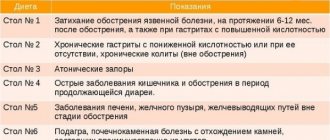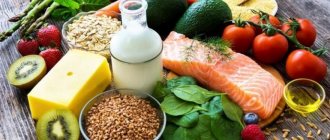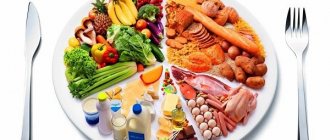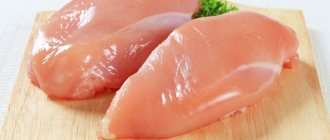Nutrition for acute erosive gastritis
During the first 24 hours, the patient is recommended to be completely hungry. You can start eating from the second day after the development of symptoms. What can you eat? The menu is allowed to include:
- Homemade jelly.
- Thoroughly boiled porridge.
- A soft-boiled egg.
The diet during this period is quite strict. Expanding the diet is allowed only after the symptoms of the inflammatory process have subsided. Meals should be fractional: five to six times a day in small portions. Food should be cooked by steaming. Before serving, food must be thoroughly chopped or wiped.
After eliminating the symptoms, the following are resolved:
- Galette cookies.
- Homemade white bread croutons.
- Steam omelette.
- Non-acidic low-fat cottage cheese.
- Soups with vegetable infusions.
- Meat of dietary grades.
- Weakly brewed tea with added milk.
The diet after an exacerbation of erosive gastritis or the development of its acute form must be followed for at least a calendar month. But to consolidate the therapeutic effect and transfer the disease into remission, it is advisable to adhere to the recommendations for three months.
The following are prohibited:
- Spicy-tasting dishes and products.
- Fresh baked goods, baked goods.
- Fatty and fried.
- Salo.
- Sausages.
- Sauce.
- Marinades.
Chronic erosive gastritis
Nutrition for chronic gastric erosion depends on the stage of the disease. During the period of remission, the diet expands somewhat, but it is recommended to eat meals in small portions - at least 6 times a day.
Spicy foods, marinades, and smoked foods are not allowed. Fruits must be peeled. You should stop using butter and replace it with products of plant origin. In the morning after waking up, you need to drink a glass of warm water.
In case of stomach erosion, apples and pears must be peeled
If the acidity of the gastric juice is high, the menu should include:
- Milk with zero fat content.
- Homemade white bread croutons.
- Liver, tongue, white meat chicken.
- Low-fat fish varieties.
- Boiled eggs.
- Stewed/boiled vegetables.
- Vegetable soups and purees.
- Puree porridges from rice, oatmeal, semolina.
- Homemade sweet juices diluted with water in a 1:1 ratio.
For low acidity:
- Strong broths and soups based on them.
- Sour milk.
- Stewed and boiled vegetables.
- Lean fish and meat.
- Cereal side dishes.
- Homemade jam, preserves, honey, raisins, figs.
- Salads from vegetables and fruits.
- Strong black tea, herbal drinks: chamomile, lemon balm, St. John's wort.
- Crackers of their homemade black bread.
Important! It is necessary to adhere to the diet until the disease enters a state of stable remission.
Erosion from drugs
Sometimes, gastric erosion is provoked by taking medications. Thus, it is often aspirin that leads to negative phenomena on the mucous membranes of the gastrointestinal tract. In this case, it is necessary not to stop taking medications, but to be more careful in planning your diet.
Taking aspirin must be combined with drinking mineral waters. It is important to drink them warm. In order to prevent gastric juice from acting aggressively on the mucous membranes, you will need to eat food often enough in small portions. If the patient drinks tea or coffee, it is necessary to add milk or cream to these drinks.
Nutrition during exacerbation of erosive reflux gastritis
A characteristic feature of this form of pathology is the reflux of the contents of the duodenum into the stomach cavity. This leads to the formation of numerous erosions on the surface of the mucosa. After an exacerbation in the first two days, the patient is recommended to take complete nutritional rest. You are allowed to drink only water without gases and unsweetened “weak” tea. This will allow the organ to “rest” and recover.
In the future, steamed and boiled dishes will be introduced into the menu. The basis of the diet should be vegetables, slimy porridges and soups, and ground chicken breast. You need to eat in small portions and at least 6 times a day. The duration of the diet after the symptoms of exacerbation subside is at least a calendar month.
It is necessary to completely exclude:
- Alcohol.
- Strong teas and coffee.
- Salt.
- Spices.
- Animal fats.
- Roast.
- Marinades.
- Sauces.
- Carbonated drinks.
What is good for the esophagus? Effective folk recipes for treating the esophagus
The esophagus is part of the human digestive system, and its main functional purpose is to transport food, the advancement of which is ensured by smooth muscle fibers that form the walls of tubular tissue, as well as sufficient moisture of the mucous membrane. Any occurrence of a pathological condition in this part of the gastrointestinal tract leads to the fact that a person begins to experience various kinds of discomfort, expressed in pain, a feeling of coma, heartburn, and stinging. Quite often, this symptomatology is inherent in certain types of diseases that exclusively affect the structure of the esophagus. Treatment of these diseases can be carried out in an inpatient general therapy department, as well as gastroenterology, or with folk remedies at home. Let us consider in more detail which alternative medicine recipes you can use to independently get rid of pathologies in this part of the gastrointestinal tract.
Diagnosis and further therapeutic action on a specific disease that has caused an inflammatory process in the upper or deeper segments of the esophagus is a purely individual process and the results of treatment largely depend on a complex of factors present in the patient’s life.
The key role is played by the type of disease, the activity of immune system cells in relation to the source of pathology, and how timely the person began to take measures aimed at curing the disease.
In general, it is believed that it is quite possible to get rid of most esophageal diseases on your own. The main thing is that the diagnosis is made correctly and the traditional medicines are selected correctly, taken by the patient in optimal proportions that are not capable of causing harm to health and at the same time have a beneficial effect on the surface of the mucous membrane of this part of the digestive system.
In folk treatment, decoctions and tinctures made from medicinal herbs are most often used, the pharmacological properties of which are the removal of an acute inflammatory process, stimulation of the esophagus's own epithelial cells for more accelerated tissue regeneration, suppression of pathogenic infections and viral microorganisms that have the ability to parasitize on the surface of the mucosa shells. These medicinal plants include heather, chamomile, plantain, sage, thyme, St. John's wort, Chinese lemongrass, ginseng, oregano, alder, tricolor violet.
Contraindications
There are not so many direct medical restrictions on the use of alternative medicine recipes, which categorically prohibit the treatment of esophageal diseases. Nevertheless, there are a number of diseases characterized by an acute and severe form of the course, requiring only hospitalization of the patient for treatment in an inpatient department with the help of potent medications, and sometimes even with the need for surgical intervention.
Therapy with folk remedies at home is not used if the following ailments are detected in a person:
- Barrett's disease (develops in the presence of prolonged reflux esophagitis, provokes total degeneration of the epithelial tissues of the esophagus and is actually considered a precancerous condition);
- the formation of a purulent abscess or phlegmon, which arose as a result of experienced mechanical trauma or exposure to aggressive chemicals on the mucous membrane;
- perforation of the epithelial wall (this is an extremely dangerous pathological condition of the esophagus, when, as a result of the deepening and growth of an ulcerative formation or in connection with a progressive oncological process, its integrity is disrupted and a hole appears in the wall, requiring surgical intervention);
- narrowing of the organ (develops after the mucous membrane has been subjected to an acute inflammatory process for a long period of time, which systematically led to its atrophy and superficial proliferation of fibrous tissue, making the passage for food narrower);
- peptic ulcer (an open wound formation, which is most often diagnosed in the lower segments of the esophagus closer to the entrance to the stomach cavity, and appears due to the negative effect of hydrochloric acid on its walls).
Diet for damage to the antrum of the stomach
This form of pathology is a type of reflux gastritis, only erosive formations are recorded exclusively in the antrum of the stomach. It is necessary to completely exclude fatty meats and foods with a sour taste, including fermented milk, from the patient’s diet.
During the period of exacerbation, split meals are recommended - at least 6 times a day. It is advisable to take food lying down, in small portions
The menu for gastric erosion of this form should completely exclude alcoholic drinks of any strength, coffee, spicy and rough foods, smoked foods, fried foods, and fatty foods. Industrial semi-finished products, salt, spices, sweets, baked goods, onions, garlic, mustard, horseradish sauces, ketchup, and mayonnaise are also prohibited. The diet helps normalize the production of digestive enzymes and also stimulates the healing of ulcerations.
How to plan a weekly diet
The patient should not feel limited when eating the same dietary products every day. Therefore, you need to write down all the permitted products and think about the maximum number of dishes from them. They can also be combined in such a way that they do not occur less frequently than every three days.
Let's give one example. Pasta, several types of cereals and mashed potatoes are allowed as side dishes for the patient. You can do the same with drinks and meat or fish dishes.
It is also important to ensure that meals occur at approximately the same time every day. This accustoms the patient to frequent meals in smaller portions, and also instills discipline in him.
There are no fasting days in the diet for gastric erosion. In this regard, its conservatism is justified by the fact that it significantly increases its therapeutic effect. It is advisable to update the weekly menu every weekend, using new recipes for dishes for stomach erosion, which can be found even among ordinary recipes.
It is also necessary to ensure that the required amount of proteins, carbohydrates, fats and microelements is contained in the daily diet. The energy value should correspond to the gender and age of the patient, as well as physical activity during the day.
Weekly menu
The weekly menu is developed taking into account the form of erosive gastritis. We offer a nutrition option for uncomplicated pathology during the period of exacerbation of the disease.
1 day:
- Breakfast – two soft-boiled eggs, weakly brewed tea, homemade white bread croutons.
- Second breakfast – banana puree.
- Lunch – vegetable puree soup, steamed chicken meatballs, rosehip infusion, homemade white bread croutons.
- Afternoon snack: mousse made from permitted berries.
- Dinner: mashed potatoes with a piece of boiled fish.
Day 2:
- Breakfast – oatmeal porridge with honey, chamomile herbal tea.
- Second breakfast – jelly, biscuits.
- Lunch – cereal soup with potatoes, steamed fish cutlet, drink.
- Afternoon snack – fruit soufflé.
- Dinner – chopped meat stew.
Day 3:
- Breakfast – rice porridge pudding, compote.
- Second breakfast – baked sweet apples.
- Lunch – beetroot soup, mashed potatoes with steamed minced chicken cutlets, weak tea.
- Afternoon snack – jelly and biscuits/homemade crackers.
- Dinner – steamed fish, garnished with vegetable puree, tea with milk and homemade crackers.
Day 4:
- Breakfast – steamed curds, tea with milk.
- Second breakfast – several pieces of watermelon.
- Lunch – vegetable soup, chicken soufflé, compote, homemade white bread croutons.
- Afternoon snack – oven-baked pear.
- Dinner – well-cooked rice porridge, herbal infusion.
Day 5:
Nutrition for gastritis with high acidity + menu
- Breakfast – steamed protein omelet, homemade berry jelly.
- Second breakfast – baked apples with honey.
- Lunch – vegetable soup with meatballs, chicken fillet (chopped) baked in foil with mashed potatoes, compote.
- Afternoon snack – a handful of dried apricots.
- Dinner – buckwheat porridge with boiled vegetables, tea and white bread crackers.
Day 6:
- Breakfast – cottage cheese casserole with berry sauce, tea.
- Second breakfast - yogurt.
- Lunch – vegetable soup, boiled rice porridge with steamed cutlet, compote.
- Afternoon snack – a portion of cottage cheese.
- Dinner – boiled fish with vegetables, drink.
Day 7:
- Breakfast – lazy dumplings with yogurt, compote.
- Second breakfast – a handful of dried apricots.
- Lunch – cereal slimy soup, a portion of boiled fish with vegetables, compote with crackers.
- Afternoon snack – berry soufflé.
- Dinner – pilaf with chicken (chopped), tea with milk.
Before going to bed, you can drink low-fat kefir, yogurt, tea with milk, fermented baked milk, warm milk with a low fat content. This diet option for gastric erosion is practiced during an exacerbation. It is quite tough, but it prevents deterioration in health and allows you to normalize the condition of the stomach in a relatively short time.
Diet recipes
During the period of following a strict diet, it is necessary to provide the patient with a variety of tastes. This will make it easier to transfer many restrictions on foods and dishes.
Apple pudding
Add gelatin (25 grams) to apple juice (100 ml). Leave it to swell for 30 minutes. Beat the yolks (5 pcs.). Boil milk (300 ml). Add granulated sugar (100 g) to it and stir. Place juice with swollen gelatin and yolks into milk. Warm in a water bath for 15 minutes. Pour the mixture into molds and refrigerate for 8 hours.
Apple pudding is not only tasty, but also a quick dish that can be included in the menu for stomach erosion
Chicken meatballs with milk sauce
Grind 500 g chicken into minced meat. Salt it a little. Fry flour (1 tbsp) in a frying pan with the addition of vegetable oil (3 tbsp). While constantly stirring, pour in milk (200 ml) and simmer the sauce until thick. Form meatballs from the minced meat, dip them in the sauce and simmer all together until the chicken is cooked. When serving, sprinkle with finely chopped herbs.
Beef and rice zrazy
Pass beef (200 g) through a meat grinder. Add some breadcrumbs to it and mix. Cook glutinous rice. Divide the minced meat into several parts. Form a flat cake, put a little rice and a piece of butter on the center. Connect the edges of the flatbread, turning it into a patty with filling. Cook the zrazy in a double boiler for 15 minutes.
Creamy rice soup
Add rice cereal to the vegetable broth. When it is half cooked, add the grated carrots to the pan. Salt the soup a little. When the rice is completely cooked, puree the soup using an immersion blender.
Compliance with the principles of dietary nutrition during the period of exacerbation of the disease is mandatory, since this helps to normalize the patient’s well-being in a short time. The diet must be followed even during a period of prolonged remission.
( 1 ratings, average: 5.00 out of 5)
What foods can you eat if you have stomach erosion?
Nutrition for the pathology in question should be thermally, chemically, and mechanically gentle. The temperature of the dishes is 15–60 °C, the consistency is liquid or mushy. You should avoid snacks that increase stomach acidity.
The list of products recommended for consumption includes porridge, jelly and steamed omelettes. Acceptable dishes are shown in the table:
| 1–12 days | 13–20 | 21–24 |
| soft-boiled eggs; butter. | ground meat; yesterday's bread. | vermicelli; beetroot, carrot juice; sweet berries, fruits. |
Steam omelet is a delicious breakfast dish for erosion.
The list of dishes that a patient can eat is varied. The patient has the opportunity to prepare the following meals:
- Steam omelet: mix eggs and milk, pour into a prepared, greased baking sheet, steam until the desired consistency of the dish is obtained. Before use, you can pour melted butter over the product.
- Boiled beef: 1 kg of meat is poured with 3 liters of water and boiled for 2 hours. Then add salt, carrots, herbs to the container and leave the product on the fire for another 30 minutes. The total cooking period is 2.5 hours.
- Chicken cutlets : grind the breast in a meat grinder, mix with bread soaked in water and grind again. Add salt to the mixture and beat it. Form a cutlet and steam it.
- Semolina porridge: boil milk, add cereal to it, stirring the product. Boil the mixture for 10–15 minutes, add oil and cool to the required temperature.
- Grated buckwheat: immerse the cereal in boiling water and cook until tender. The resulting product is ground, salted, and then heated again in a water bath. Before eating, it is better to pour melted butter over the porridge.
- Beef soufflé : the boiled product is passed through a meat grinder, mixed with milk sauce, egg yolk and whipped white. The resulting mass is placed in a greased frying pan and steamed.
- Boiled chicken: put the poultry meat in boiling water, cook for a while, remove the foam and add herbs. After this, heat treatment is continued until cooked over low heat.











